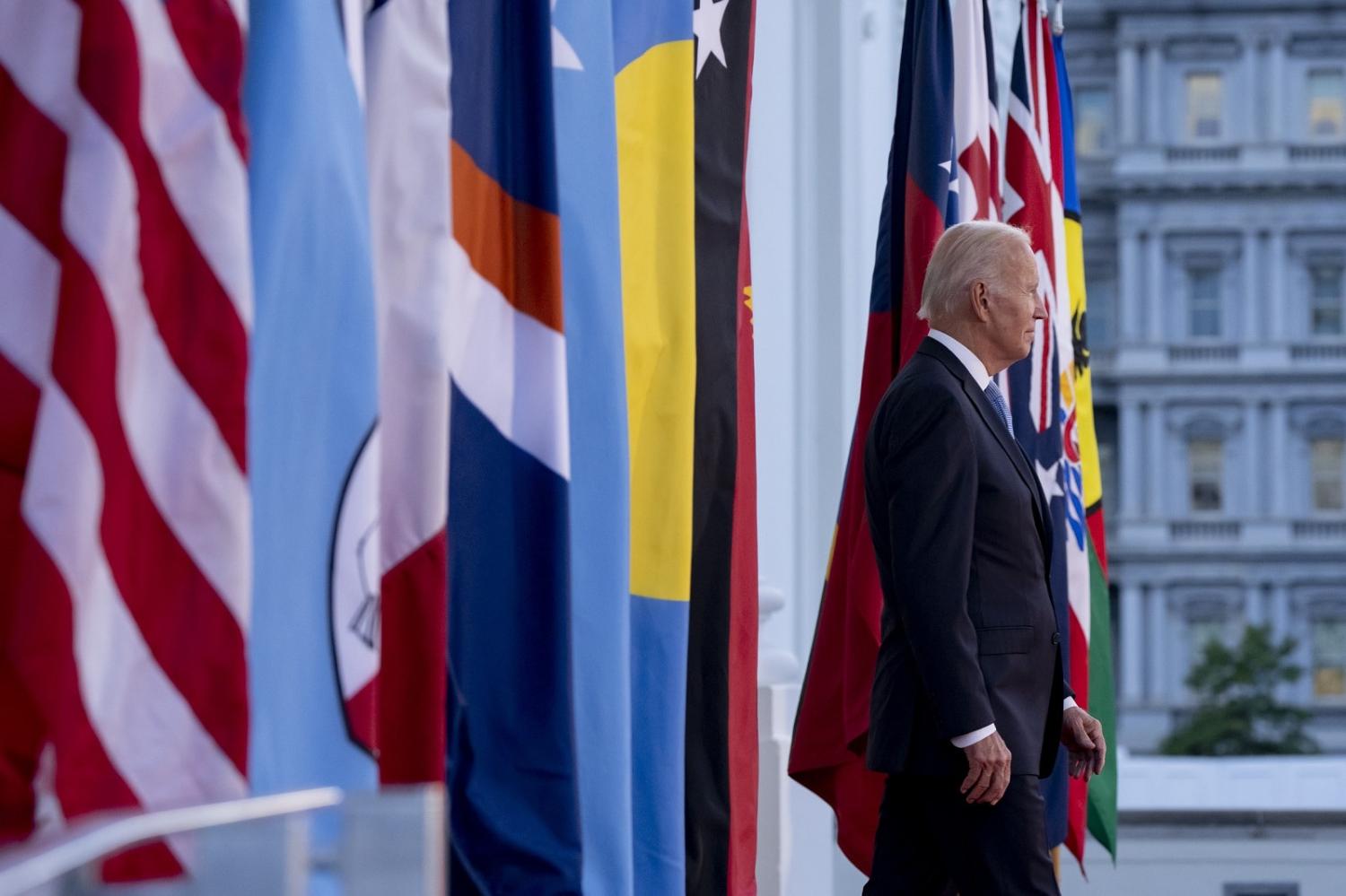Last September, the United States made some big promises to Pacific Island Countries (PICs) at its first ever Pacific Leaders’ Summit. The brief follow-up summit scheduled to take place in Washington later this month will be a chance not only to make up for the last minute cancellation of US President Joe Biden’s trip to Papua New Guinea in May this year, but also to take stock of commitments made a year ago. It will be a mixed report card, but one that shows slow yet positive progress.
At the first summit, there were significant announcements ranging from more action on climate change to maritime security, a commitment to spend an additional US$810 million in the region, and a pledge to enhance diplomatic engagement. Washington also promoted the Partners in the Blue Pacific initiative, a consortium of “like-minded” development partners committed to advancing Pacific development and improving development partner coordination.
Over the past year, there has been notable progress in many areas. The United States has:
- Stepped up its in-person, high-level engagements in the region with very senior officials; President Biden was to visit PNG – the first visit by a sitting US president to the region – but was forced to cancel his trip at the last minute.
- Re-opened its embassy in the Solomon Islands, opened a new embassy in Tonga, and advanced plans for embassies in Kiribati and Vanuatu; established a new USAID office in Fiji; and extended the Shiprider and Peace Corps programs.
- Re-negotiated and enhanced the Compacts of Free Association with the Republic of Palau and the Federated States of Micronesia, and with optimism hopes to soon conclude an agreement with the Republic of the Marshall Islands after resolving issues concerning the legacy of US nuclear testing and funding allocations.
- Signed a new Defence Cooperation Agreement with PNG.

Although this renewed attention is welcome, Washington must be careful to balance its security concerns with the PICs’ development priorities, avoiding an appearance of preferencing geopolitical tussles over Pacific needs. Donor efforts to force the PICs to choose between major powers risks alienating and frustrating PICs that, as small powers, see value in hedging relationships for maximum gain, and remaining “friends to all”. Indeed, Pacific Islands Forum Secretary General Henry Puna recently cautioned donors to avoid “strategic manipulation”.
Equally as important, Washington needs to ensure that its actions are as good as its headlines sound. For example, at the first summit, President Biden committed to spend an additional US$810 million. The amount sounds grand, but those funds – which have still not been approved by Congress – will be spread over ten years and across more than a dozen Pacific Islands Forum member states and a few regional agencies. The lion’s share of this number – US$600 million – is earmarked for the renewal of the South Pacific Tuna Treaty. Similarly, the new American embassies remain minimally staffed, and approval of the re-negotiated Compacts of Free Association (with the attendant US$7.1 billion in funding) also remains pending in Congress. The Partners in the Blue Pacific initiative continues to remain nebulous, with a lack of clarity on what new funds or approaches the initiative will add to the region, and how it will coordinate member efforts to align with Pacific policies and agencies.
Moving into year two, Washington should focus on three important areas. First, it needs to continue to deliver the funds and assistance that it has promised, while also responding to the local needs that the PICs themselves have identified. If the United States and its like-minded partners are not there to help, the PICs will turn elsewhere. In this regard, it is clear that no one development partner can address all of the region’s needs. Thus, Washington must focus on where it has a comparative advantage, such as its abilities to provide access to educational and employment opportunities, and support for improving basic services and critical infrastructure. Recognising that it cannot go it alone, Washington should enhance its coordination of development efforts with like-minded partners.
Second, Washington needs to work on process. Too often, it fails to capitalise on what should be publicity wins because of a seeming rush to make an announcement before all of the details have been worked out. When trumpeting the Partners in the Blue Pacific initiative last September, the United States moved ahead before adequately engaging the leading regional political body, the Pacific Islands Forum, and other key regional players such as France. Likewise, the security agreement with PNG was rushed through in time to be announced for the Biden visit, which was subsequently cancelled. The lack of socialisation of the agreement raised concerns in PNG about threats to sovereignty, leading to student protests and causing jitters that have set back the Australia–PNG Security Treaty.
Finally, the United States needs to take aggressive action on climate change. As the speeches from the Pacific Island Leaders at the UN General Assembly made clear this week, this issue is far and away the top priority of the Pacific. The Biden administration is making more headway than its predecessor, but as a major emitter of greenhouse gases, the PICs expect the United States to show stronger global leadership towards limiting temperature rise to 1.5°C. Taking a leadership role in developing tailored climate financing, especially for loss and damage, would also earn the United States significant credit.
The United States’ voyage back into the Pacific fold will take time, and there will certainly be rough waters along the way, but the country is in a strong position to be a leading partner across the region, helping the Pacific Islands develop and achieve common regional goals.


